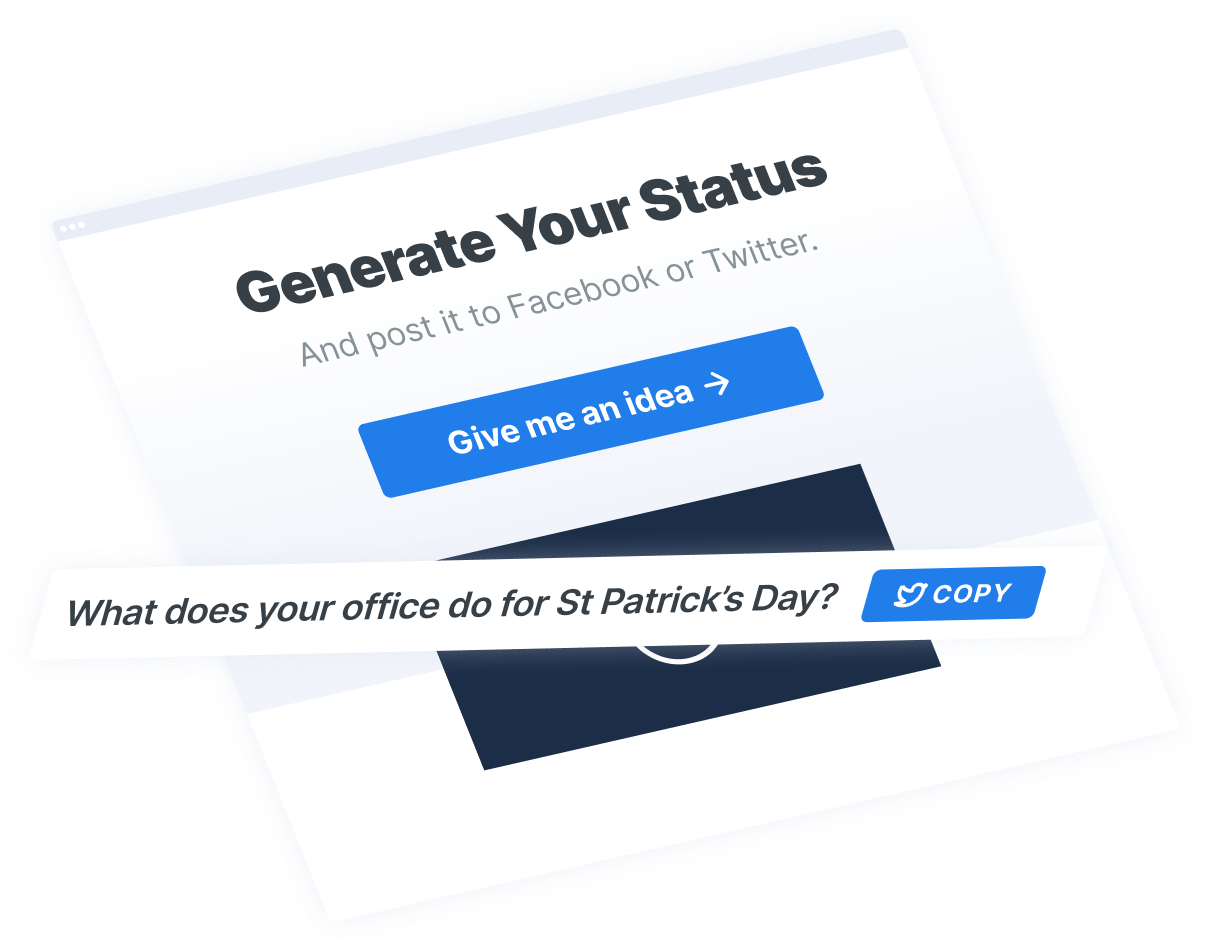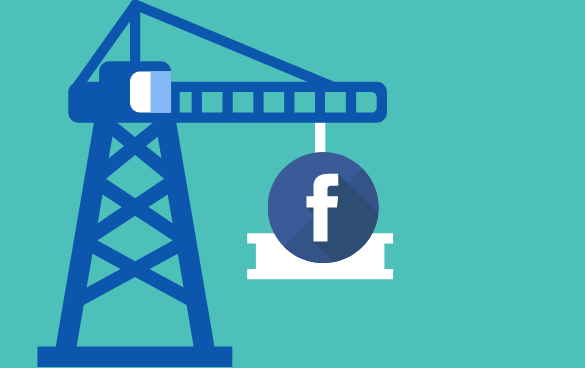- Home
- Blog
- Social Media
- Your 6-Step Guide to Using B2B Facebook Advertising
Your 6-Step Guide to Using B2B Facebook Advertising
-
 8 min. read
8 min. read
-
 Macy Storm
Macy Storm Content Marketing Consultant
Content Marketing Consultant
- Macy is a content marketing consultant with over five years of experience creating content for dozens of industries including home services, recreation, and education. She’s written about every marketing topic under the sun, from SEO to AI to email marketing. Her work has been featured by Search Engine Journal, HubSpot, Entrepreneur, Clutch, and more. In her free time, Macy enjoys crafting, reading comic books, and walking her dog Daisy.
Did you know that 89 percent of B2B businesses use Facebook over LinkedIn for marketing? B2B Facebook advertising is a great opportunity for your business to reach other businesses that are looking for your products or services.
In this post, we’ll share how to get started with Facebook B2B advertising, so you can create your first B2B Facebook ads!
P.S. For professional help with advertising on Facebook, check out our Facebook advertising services. Just in the past five years, we’ve helped our clients use channels like Facebook to generate more than 24 million qualified leads, and we can do the same for your business with a custom, results-driven strategy!
Now, let’s dive in!
How to get started with B2B Facebook advertising
Follow the steps below to get started with your first B2B Facebook advertising campaign:
1. Install the Facebook pixel
Before you launch your Facebook advertising campaign, start by installing the Facebook tracking pixel. The Facebook tracking pixel allows you to optimize for nearly any on-site actions. It allows you to track information about people who visit your site and use that information to advertise to them later.
It doesn’t track any personal information, like names or credit card numbers. Instead, the Facebook tracking pixel tracks information like demographic information and location information. It’s generalized information that helps you target your ideal audience. You can track actions that people take on your site, too.
It includes actions like conversions, whether they are sales or filling out forms. It’s a great way to help you target people more precisely through Facebook advertising for B2B.
2. Set your campaign goals
To create a successful Facebook B2B advertising campaign, start by setting your campaign goals. You won’t be successful with your ads if you don’t know what you’re trying to achieve. Setting goals gives you direction and helps you create a successful campaign.
There are four main goals you can set with Facebook paid advertising:
- Brand awareness: Brand awareness is a very common goal for businesses. You want people to get to know your brand, so they choose your brand when they’re ready to convert. With B2B businesses, it is common to set brand awareness as a goal to reach interested leads.
- Gain traffic: You can also set a goal to gain traffic with your ads. This helps you build a highly specific remarketing list. You can market your products or services to people in specific demographics or interests and guide them to your website.
- Lead generation: With lead generation, you collect information directly within Facebook and obtain valuable contact information. This allows you to build an email list and generate leads for your sales team.
- Conversions: When you create conversion-focused ads, you focus on earning sales from your ad. With these ads, you create specific landing pages that are relevant to your campaign. It’s a great way to help your business grow.
These are the four main goals you can set for your Facebook advertising campaign for your B2B business.
3. Set a budget
Once you have your goals set, you will set your budget and schedule. It’s important that you define your budget and when you’re going to spend that money. You don’t want to spend all your money too quickly.
Facebook gives you the option between two budgeting options: daily budget and lifetime budget. With a daily budget, you have a start date, end date, and amount you want to spend each day. A daily budget is a great option for businesses that are just starting out with advertising.
If you’ve never run a social media campaign or pay-per-click (PPC) advertising campaign, this is a great budgeting option to start. The other option is a campaign lifetime budget. This option is for more experience marketers because you deploy a budget amount across a certain period, which is the duration of your campaign. Your spend amount gets distributed over certain periods of time, whether it’s days or weeks.
These are the two options you have for setting your budget. You can choose which one works best for your business.
4. Choose a schedule
Once you have your budget option selected and you have reviewed your Facebook advertising cost, you will set your schedule. When you set a schedule for running your ads, you spend your money more wisely. It ensures that you don’t waste money when running a Facebook B2B advertising campaign.
When you create an ad on Facebook — check out these Facebook ad examples for inspiration — Facebook recommends running your ad at all times of the day to increase exposure. This isn’t necessarily what’s best for your budget, however. You don’t want to waste money running your ad at times when your audience isn’t likely to engage with them.
By setting a schedule, you tell Facebook when to serve your ad. They know the time periods to serve your ad and time periods to ignore. This helps you stretch your budget and get more out of it.
When you’re scheduling campaigns, it matters when your audience takes action. You want to reach them when they’re most likely to buy. With this feature, you can schedule when you want your ads to run, which helps you spend your budget more effectively.
5. Pick your ad placement
When you start running a B2B Facebook advertising campaign, you automatically assume that all your ads will appear in the feed. That is not the case. When you run a Facebook advertising campaign, your ads can appear in numerous places.
 These ad placements include:
These ad placements include:
- Newsfeed
- Right column
- Instant articles
- In-stream videos
- Groups
If you don’t specify where you want your ad to be, you can end up in any one of these places. A common Facebook advertising tip is that you limit the placements for your ads to ensure that you’re spending your budget wisely. Facebook will tell you that choosing custom placement reduces the number of people you will reach, but that does not reflect the quality of leads you reach.
When you’re more specific with your placement, you’re reducing the number of uninterested people that will see your ad and won’t act on it. Ideally, as a B2B business, you want all your ads to appear in the news feed and right column on Facebook. When you set up your advertising campaign, ensure that you select custom placements to specify that you only want your ads to appear in those spots.
Facebook is one of the best advertising options for B2B, but you must ensure that you set up your campaign correctly to drive results. By specifying where you want your ads to appear, you will increase the quality of your leads and help your business grow.
6. Set your target audience
Your target audience is an important part of your advertising campaign. You want to ensure that you’re reaching the right people to get them to engage with your content. To have a successful advertising campaign, you must set your target audience.
There are three options for your audience: core, custom, lookalike audiences.
Core audience
When you use the core audience option, you set specific demographic parameters. These parameters include:
- Age
- Gender
- Language
- Location
- Finances
- Education
- Work (employer, industry, job title)
These are just a few of the ways you can target people interested in your business. This helps you build a specific audience that is most likely to be interested in your business. It’s a great way to reach people who are decision-makers at companies that are likely to buy your products or use your services.
Custom audiences
If you aren’t sure who is in your core audience yet, you can use custom audiences to help you figure out your ideal audience.
You can obtain information from customer files (like email lists), website tracking (through your Facebook pixel), and engagement metrics to target the right people. You can leverage this existing data to find prospects on Facebook. It allows you to create ads that are catered to your audience’s needs.
You’ll attract more interested leads when you have previous data to work with to create your ads.
Lookalike audiences
With lookalike audiences, you can create a brand-new audience based on demographic and psychographic information from your current audience. There are dozens of other companies on Facebook that are interested in your products or services, they just haven’t found your business yet. By using lookalike audiences, you reach people who are interested in your business.
Your ads will reach new leads for your business. There are three options for creating audiences with your Facebook B2B ads:
- core audiences
- custom audiences
- lookalike audiences
Start using B2B Facebook advertising to grow your business
Facebook advertising for B2B is a great way to help your business grow and reach new leads in your target market. If you’re ready to start using Facebook B2B advertising, contact us online to see how we can help your business get started!
-
 Macy is a content marketing consultant with over five years of experience creating content for dozens of industries including home services, recreation, and education. She’s written about every marketing topic under the sun, from SEO to AI to email marketing. Her work has been featured by Search Engine Journal, HubSpot, Entrepreneur, Clutch, and more. In her free time, Macy enjoys crafting, reading comic books, and walking her dog Daisy.
Macy is a content marketing consultant with over five years of experience creating content for dozens of industries including home services, recreation, and education. She’s written about every marketing topic under the sun, from SEO to AI to email marketing. Her work has been featured by Search Engine Journal, HubSpot, Entrepreneur, Clutch, and more. In her free time, Macy enjoys crafting, reading comic books, and walking her dog Daisy. -

WebFX is a full-service marketing agency with 1,100+ client reviews and a 4.9-star rating on Clutch! Find out how our expert team and revenue-accelerating tech can drive results for you! Learn more
Twitter and Facebook Status Generator
Finding engaging social media content for your business can be difficult. Use our tool to quickly find ideas and post directly to your page.
Give Me an Idea

Social Media Success Story

Proven Marketing Strategies
Twitter and Facebook Status Generator
Finding engaging social media content for your business can be difficult. Use our tool to quickly find ideas and post directly to your page.
Give Me an Idea
What to read next





